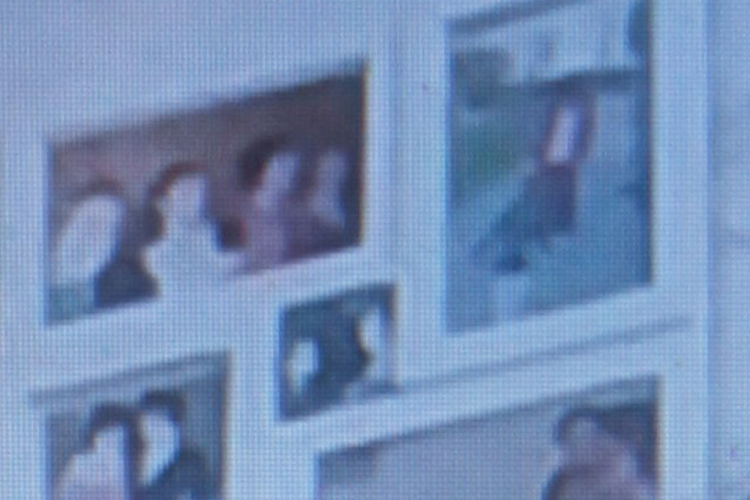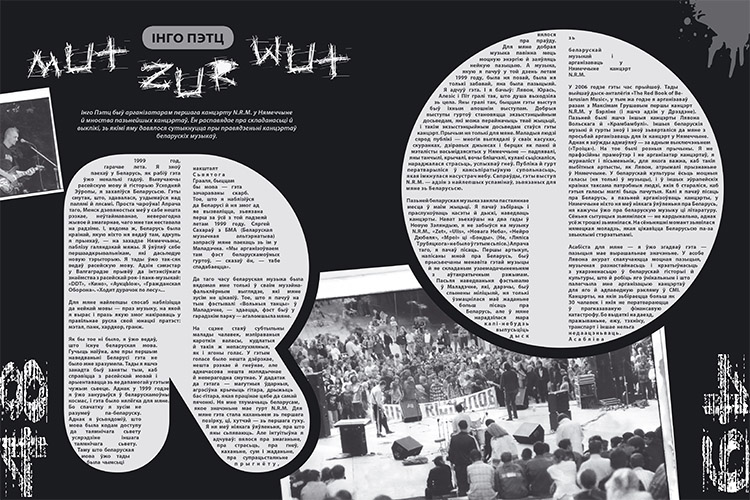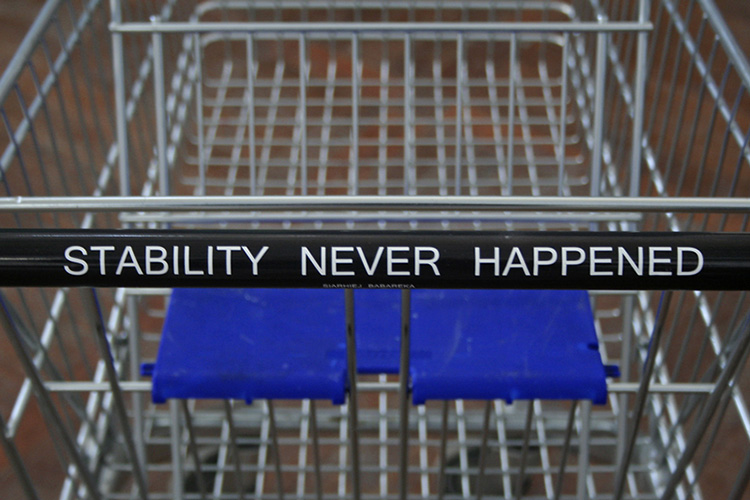
Аўтар: Volha Bubić, 11/11/2014 | ART Cult Aktivist project
FREEDOMS AND MYTHS OF «BELARUSIAN CLIMATE»
«Why do people create myths? Well, people do not exist in this reality, in principle!» — Philip Chmyr concludes, giving me a cunning look across the table in a busy café. Next to him there is one more protagonist of the Belarussian art-irreality sitting — Ihar Korzun, for more than an hour braiding an infinitely intricate and controversial story of the rise and dissolution of the art group «Belarusian climate».
Today more questions than reliable facts remain in terms of the activities of this «unique synthetic phenomenon in the city culture», which actually correlates with the Belarusian national tradition of «resetting».
Two exhibitions of «Belarusian climate» appear in the list of «Month of Photography in Minsk» events as if arising from nowhere. The curator Volha Rybčynskaja’s accompanying texts are filled in with classical quotations and intriguing philosophical terms, but apparently they do not aim at building a bridge between the «Climate»’s Soviet past rich in art activities and unusual series prepared for the October shows. The «mythmakers» themselves are not in a hurry to clarify the issue either, arguing about such things as exact wording and the chronology of the performances held in the 1990s.
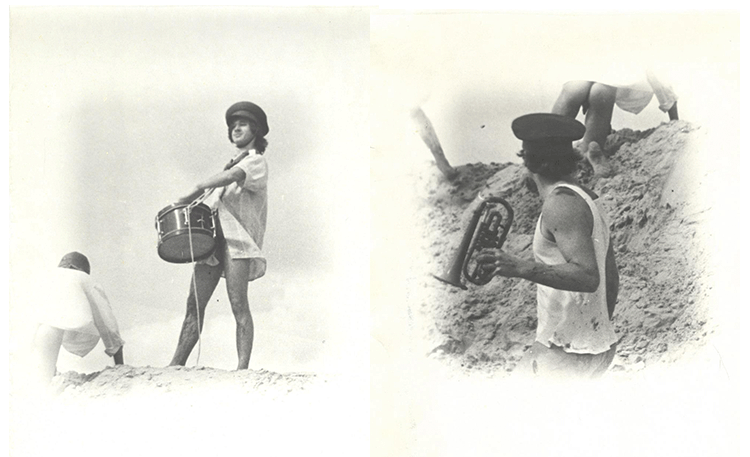
«Belarusian Deserts Conquest», «Belarusian Climate», 1988
And maybe all this is only a part of a big game a few decades long? The game with missing unique art objects, closed exhibitions and lost slides? A part of the lengthy myth about how a group of informal artists intoxicated with freedom decided to create a myth?
According to philosophers, the role of mythmaking as a way of active production, translation and replication of various kinds of myths in the cultural situation of the post-industrial society is enhancing. A wish to retell the reality appears due to the exacerbation of the contradictions between the trends of social development and human adaptive capacities. At some point it becomes too difficult for people to perceive and name those rapid changes that take place around, inscribe them within the existing system of coordinates. And as a result, a need to create another «reality» in which the operation will be more natural and less traumatic is born. Something like this definitely happened in the 1990s, when a group the «young and angry» in their own skin experienced that famous wind of change and decided to express their own attitude to it by means of creative methods.
«Such a thing as a passion for freedom should always be kept in mind! — Ihar Korzun, one of the participants of „Belarusian Climate“ claims. — It is important to remember and understand in what times „Climate“ was acting. In the late 1980s the whole world was young! Everything turned upside down! We had to spend seventeen years living as „Homo Sovieticus“ before suddenly finding ourselves in total freedom and fully experiencing its effects on us!»
However, in the given situation the key was a burning contradiction between freedom which suddenly fell down on people’s heads (including the freedom given in the form of a sudden access to the enormous amount of new information) and their actual poverty and lack of money.
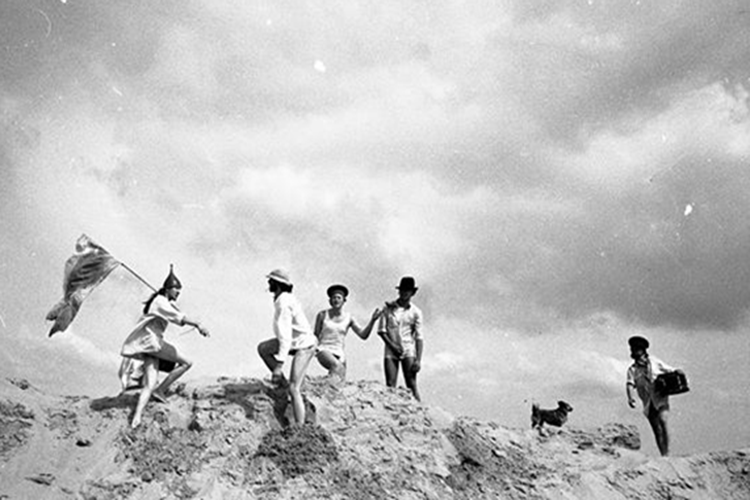
«Belarusian Deserts Conquest», «Belarusian Climate», 1988
«From poverty we got into even greater poverty, when everything was over, — Ihar says, — there was no butter, no sausages, no vodka and no cigarettes. But we were free! We tasted this freedom and quickly became addicted to it like to a drug which not only intoxicated our brains, but also made us mutate». «Mutations» found their reflection in the photographic documents of the happenings and performances of art-group «Belarusian climate», among which the most prominent are, perhaps, «Belarusian Deserts Conquest», «Olympia» and «Aeronauts». Looking at these pictures with even a contemporary gaze we find them filled in with the drunken sense of boundless freedom, wild optimism, playing a beautiful but utopian world, completely different from the harsh reality of the 1990s. «Climate» participants actively and sincerely multiplied other types of Belarusian realities, creating a new myth about themselves.
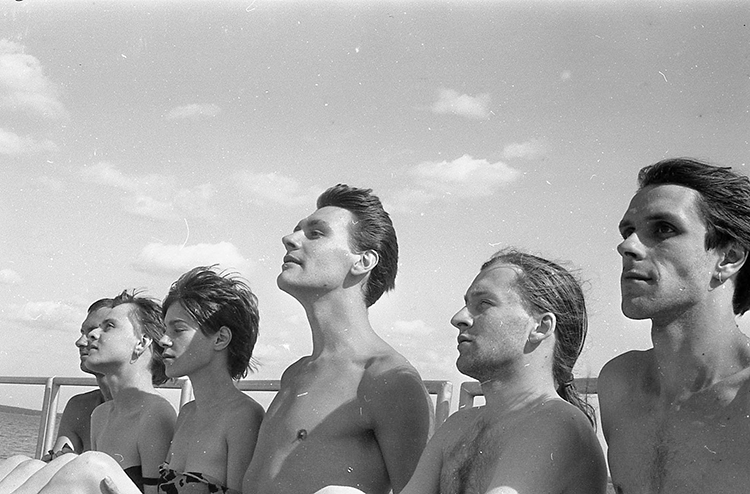
«Olympia», «Belarusian climate», 1991
Freedom and going beyond the obsolete Homo Sovieticus’ traditions, that used to assume the state of being on a constant alert regarding to what could and what could not be done, became the fundamental principles of the activities of the art-group «Belarusian climate». One of the ways of this freedom expression was mixing of genres and tendencies, quite a brave action for those times.
Indeed, it is impossible to make the activitis of «Belarusian climate» fit into certain genres. The members of the art-group took pictures, composed music, staged performances, not only creating multi-genre expositions, but also transforming them into separate large-scale conceptual art-objects. Ihar Korzun describes the «Climate»’s creativity as «unique synthetic phenomenon in the city culture», stating with overt pride that the art-group members also devised their own methods and forms of work, one of which was, for example, the genre of «word of mouth movie».
Philip Chmyr, another art-group member, notes that in the first years of the life of «Belarusian climate» several directions of the team’s creativity were unfolding in parallel. Photographic series were shot, performances and happenings were held, environment was created — specific circumstances of the planned idea realization. «Since happenings take very little time, — Philip explains, — at some point we decided to purposefully bring photographers to shoot a performance which we were setting so that it was recorded and could later be shown at exhibitions accompanied by music. The exhibition’s visitor got a sort of a brief story presented graphically».
Recalling an example of the exhibition which at the same time was also an art-object, Ihar Korzun speaks about the exposition held in «Dom Kino» (the current Red Church) in April, 1988. The photos of «Belarusian Climate» were presented on the floor, under glass plates, covered by shrapnel and fallen leaves. Ihar says that the show, as well as many other «Climate»’s creative initiatives, was closed by the administration; nevertheless, this fact did not cause the guys’ annoyance or disappointment.
«We were kicked off from the exhibition, because we did not really fit in with a general idea of how the things should be. But we did not care because performance was for us far more important than the duration of the exposure. To cause some nix for the sake of our own fun was something that we enjoyed much more that pleasing someone’s curiosity, meeting someone’s tastes or preferences.
And this was not a youthful provocation at all! Above all we appreciated our freedom. And we appreciated it not as something that belonged to each of us personally, it was common, being equally in everybody’s possession.
It was then that one of the slogans of «Belarusian Climate» was born: «Freedom cannot be personal», — Ihar Korzun says.
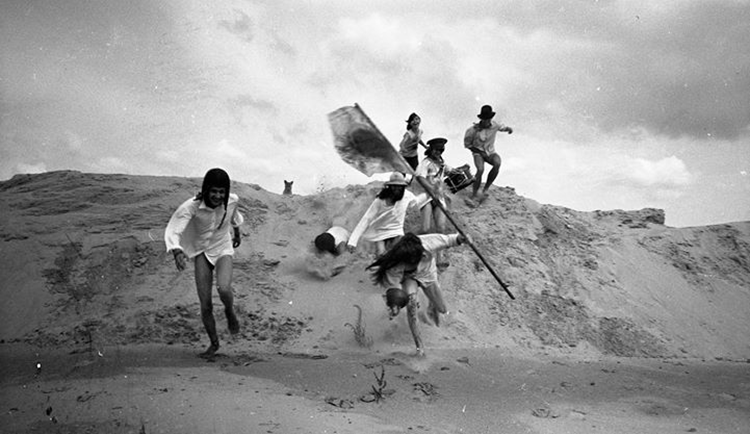
«Belarusian Deserts Conquest», «Belarusian Climate», 1988
The freedom that Igor mentions was manifested not only in the presentation of creative ideas, but also in the approach to the materials used. Paper, old films and even leaves that covered the floor of the gallery were allowed to «live their own lives». All of them were given subjective qualities and a will of their own that in its turn determined the final result: «We made our own slides, scratched films, punched holes in them, sometimes leaving films underdeveloped, in minilabs we collected overexposed, undeveloped, spoiled film scraps… We used any material, because we believed that anything could be of value. The main thing was to take it into our own hands and somehow breathe on it: put our efforts to revive and transform the materials into an independent entity in the world of art and photography!»
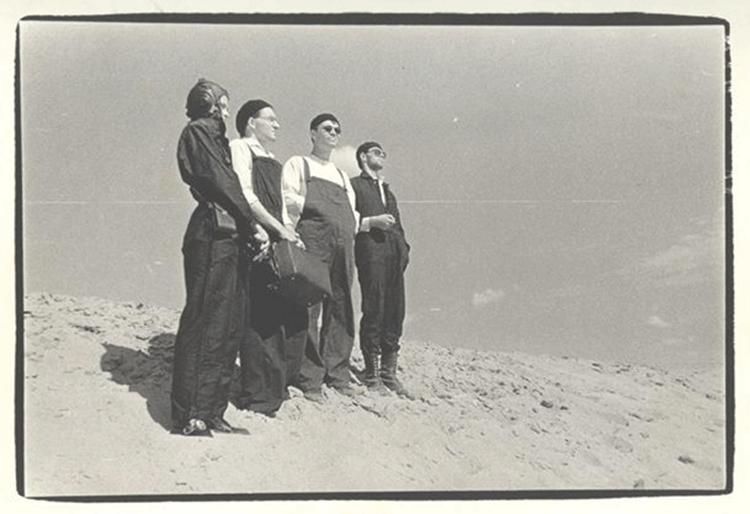
«Aeronauts», «Belarusian Climate», 1990
The album with the visual documentation of the performance «Aeronauts» — a unique art-object — was the culmination of «Belarusian climate»’s creativity. Unfortunately lost while shipment, it combined a number of photos glued on thick pages, poems by Igor Polyakov and drawings by Aleksei Novitsky. The mood of «Aeronauts» is similar to the utopian tonality of free nude characters in «Belarusian Deserts Conquest». The performance protagonists are the first and the last inhabitants of the non-existing country, wise and carelessness at the same time, not only believers, but quite clearly the witnesses of the bright realm of freedom and reason.
Mythmaking was a personal response of the artists to the changing reality and a kind of defense mechanism, vaccination against the illogical world.
«There you are, there is a world that surrounds you. And between you and this world there is always some sort of barrier you should always try to overcome — Ihar Korzun concludes. — Sometimes you succeed in doing it, sometimes you do not. More often you do not … And since this barrier prevents you from experiencing and understanding the world fully, you start to dream of it, especially in the circumstances of the years of the informational hunger … We needed to create new worlds as we needed air to breathe in».
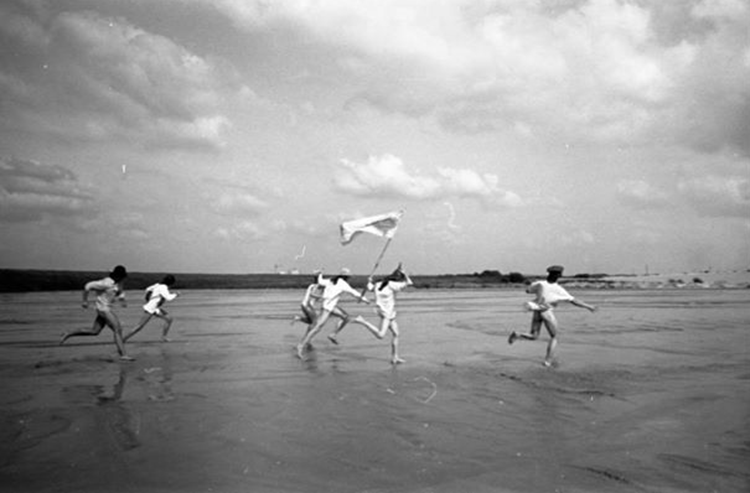
«Belarusian Deserts Conquest», «Belarusian Climate», 1988
Several decades have passed since the late 1980s, both cultural and social landscapes have undergone significant changes.
But did that once drawn utopian myth about the inhabitants and conquerors of «Belarusian deserts» become closer to us? Did we learn to treat the infinite freedom which fell down on our heads?
Each of us can find personal answers to these questions having decided for him/herself whether today we live in a beautiful story of regained freedoms or the dreams that aeronauts had are still only a photography in the lost album?
Volha Bubič. Translated on English by V.B.
Photos © «Belarusian climate»
Opinions of authors do not always reflect the views of pARTisan. If you note any errors, please contact us right away.



